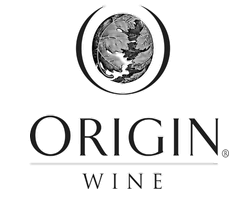High Court overturns wine and whisky decision
The High Court of Justice has overturned a decision of the United Kingdom Intellectual Property Office (UKIPO) which found a likelihood of confusion between the marks JURA ORIGIN and ORIGIN.
The applicant, Whyte and Mackay, applied to register the mark JURA ORIGIN for Scotch whisky. The opponents, Origin Wine UK Limited and Dolce Co Invest Inc, brought an opposition based on, among other things, a UK trade mark registration for the mark ORIGIN which had been genuinely used in relation to wine, and the following Community trade mark (CTM) registered for alcoholic beverages including wine (the 'ORIGIN mark').

In the decision, the Hearing Officer considered that both of the opponents' earlier marks had the same level of inherent distinctiveness. He then went on to compare the marks ORIGIN and JURA ORIGIN and concluded that the dominant element of the application was the mark JURA, but that the word ORIGIN retained an independent distinctive role within the applicant's mark. The Hearing Officer also concluded that the goods covered by the marks shared a low degree of similarity and therefore concluded that there was a likelihood of confusion between the marks.
In relation to the ORIGIN mark, the Hearing Officer considered that whilst the leaf device was eye-catching, such devices are commonplace on alcoholic labels and would go unnoticed by consumers. Overall, the Hearing Officer concluded that there was a moderate degree of similarity between the marks and as the goods concerned were identical, this resulted to a likelihood of confusion between the marks.
Origin Wine and Dolce Co Invest appealed to the High Court. The basis of the appeal was essentially that the Hearing Officer had failed to:
- apply the Medion case correctly;
- fully analyse the visual, aural and conceptual similarities between the marks; and
- give account to the fact that the common element between the marks had a low level of distinctiveness which is not usually sufficient to result in a likelihood of confusion between the marks.
The appeal was heard by Arnold J who decided as follows.
1.Failure to apply the Medion case correctly
Arnold J agreed that an error of principle had occurred because the Hearing Officer had failed to consider how the average consumer would understand the ORIGIN mark in the context of the relevant goods.
In particular, Arnold J held that the average consumer would understand ORIGIN as referring to the origin of the goods ie, as indicating that the goods originate from JURA. This was particularly so given that the product at issue was Scotch whisky, the origin of which is a very important factor to consumers. Accordingly, Arnold J held that the ORIGN mark was inherently descriptive or at the least non-distinctive in relation to the goods and that the word ORIGIN would not be considered to have an independent distinctive role within the application.
2. Failure to fully analyse the visual, aural and conceptual similarities between the marks
Arnold J agreed that the Hearing Officer committed errors of principle when comparing the mark JURA ORIGIN with ORIGIN mark., as the Hearing Officer had discounted the vine leaf element of the ORIGIN mark, despite describing it as "eye-catching" earlier in his decision. Arnold J considered that the vine leaf element was conceptually relevant as it reinforced the message that the ORIGIN mark originated from a wine producer.
3. Failure to give account to the fact that the common element between the marks has a low level of distinctiveness which is not usually sufficient to result in a likelihood of confusion between the marks.
Arnold J concluded that the Hearing Officer had erred as a result of his earlier error when assessing the distinctive character of the two earlier marks.
Having concluded that there were various errors of principle in the Hearing Officer's decision, Arnold J went on to re-consider whether there was a likelihood of confusion between the marks at issue.
Conclusion
Arnold J concluded that, on an overall assessment, there was no likelihood of confusion between the marks JURA ORIGIN and ORIGIN.
In short
This case includes a helpful discussion of the Medion case.
It also serves as a helpful reminder of some of the principles surrounding likelihood of confusion and composite marks (ie, marks into which the entirety of an earlier mark has been subsumed).
Case details at a glance
Jurisdiction: England and Wales
Court: High Court of Justice Chancery Division
Parties: Whyte and Mackay Limited v Origin Wine UK Limited and Dolce Co Investing
Citation: [2015] EWHC 1271 (Ch)
Date: 06 May 2015
Full decision: http://dycip.com/origintm
